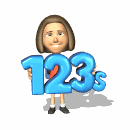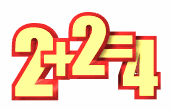Kindergarten Math as prescribed by the new NYS Core Curriculum

• We are learning to make sense of problems and persevere in solving them.
• We are learning to reason abstractly and quantitatively.
• We are learning to make viable arguments and critique the reasoning of others.
• We are learning to model with mathematics.
• We are learning to use appropriate tools strategically.
• We are learning to attend to precision.
• We are learning to look for and make use of structure.
• We are learning to look for and express regularity in repeated reasoning.
• We are learning to count to 100 by ones and by tens.
• We are learning to count forward beginning from a given number within the known sequence (instead of having to begin at 1).
• We are learning to write numbers from 0 to 20. We are learning to represent a number of objects with a written numeral 0-20 (with 0 representing a count of no objects).
• We are learning the relationship between numbers and quantities. We are learning to connect counting to
cardinality.
• When counting objects we are learning to say the number names in the standard order, pairing each object with one and only one number name and each number name with one and only one object.
• We are learning that the last number name said tells the number of objects counted. We are learning that the number of objects is the same regardless of their arrangement or the order in which they were counted.
• We are learning that each successive number name refers to a quantity that is one larger.
• We are learning to count to answer “how many?” questions about as many as 20 things arranged in a line, a
rectangular array, or a circle, or as many as 10 things in a scattered configuration.
• Given a number from 1–20 we are learning to count out that many objects.
• We are learning to identify whether the number of objects in one group is greater than, less than, or equal to the number of objects in another group, for example by using matching and counting methods.
• We are learning to compare two numbers between 1 and 10 presented as written numerals.
• We are learning to represent addition and subtraction with objects, fingers, mental images, drawings, sounds (for example, claps), acting out situations, verbal explanations, expressions, or equations.
• We are learning to solve addition and subtraction word problems. We are learning to add and subtract within 10, for example by using objects or drawings to represent the problem.
• We are learning to decompose numbers less than or equal to 10 into pairs in more than one way, for example by using objects or drawings, and record each decomposition by a drawing or equation (e.g., 5 = 2 + 3 and 5 = 4 + 1).
• For any number from 1 to 9, we are learning to find the number that makes 10 when added to the given number, for example by using objects or drawings, and record the answer with a drawing or equation.
• We are learning to fluently add and subtract within 5.
• We are learning to compose and decompose numbers from 11 to 19 into ten ones and some further ones, for example by using objects or drawings.
• We are learning to record each composition or decomposition by a drawing or equation (for example, 18 = 10 +8). We understand that these numbers are composed of ten ones and one, two, three, four, five, six, seven, eight, or nine ones.
• We are learning to describe measurable attributes of objects, such as length or weight.
• We are learning to directly compare two objects with a measurable attribute in common, to see which object has “more of”/“less of” the attribute, and can describe the difference. Example on next chart.
• For example, directly compare the heights of two children and describe one child as taller/shorter.
• We are learning to classify objects into given categories; count the numbers of objects in each category and sort the categories by count.
• We are learning to describe objects in the environment using names of shapes, and describe the relative positions of these objects using terms such as above, below, beside, in front of, behind, and next to.
• We are learning to correctly name shapes regardless of their orientations or overall size.
• We are learning to identify shapes as two-dimensional (lying in a plane, “flat”) or three-dimensional (“solid”).
• We are learning to analyze and compare two- and three- dimensional shapes, in different sizes and orientations, using informal language to describe their similarities, differences, parts (for example, number of sides) and other attributes (for example, having sides of equal length).
• We are learning to model shapes in the world by building shapes from components (for example, sticks and clay balls) and by drawing shapes.
• We are learning to compose simple shapes to form larger shapes. For example, “Can you join these two triangles with full sides touching to make a rectangle?”




